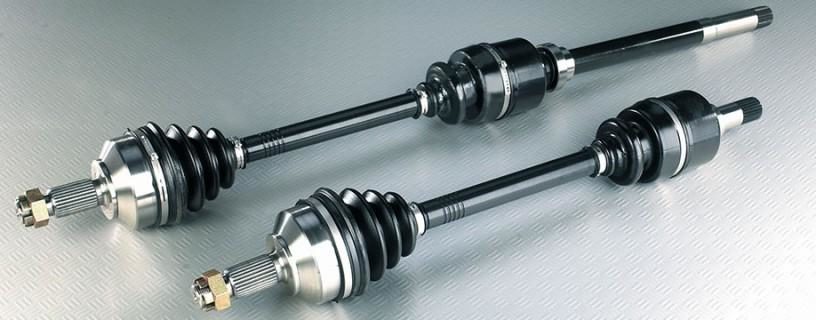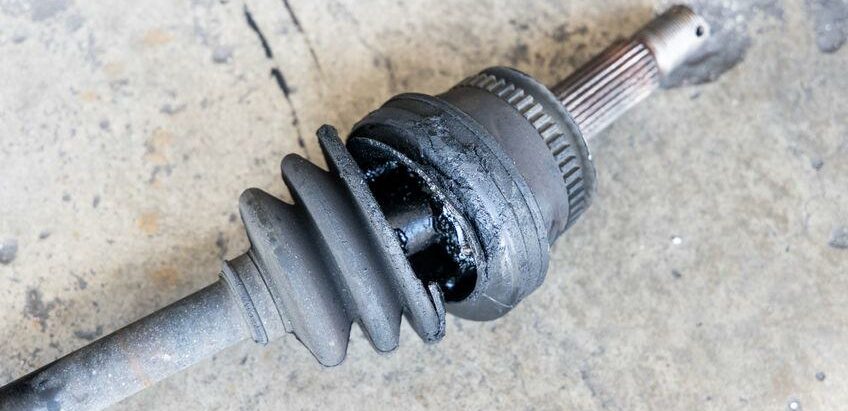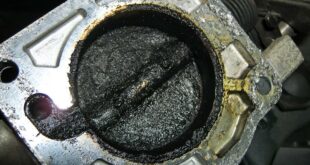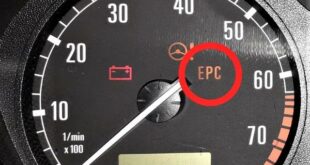A defective car drive shaft is not uncommon. Especially when the vehicles are a few years old, one or more drive shafts can say goodbye. We know the function of the drive shaft and we also know the signs of possible damage. The following article also contains tips on replacement/repair and costs. The drive shafts connect the corresponding final drive to the driven wheel. They ensure that the engine torque is sent to the wheels. Due to various external influences, the joints at both ends of the drive shaft can be subject to increased wear. They must then be replaced. Common reasons are Loss of grease on the axle boot or a permanent excessive load by, for example, an aggressive driving style or a Lowering. The latter often results in a disadvantageous axle geometry, which promotes increased wear. Furthermore, the drive elements can also be damaged by an accident.
How does a defective drive shaft make itself felt while driving.
- Vibrations and cracking noises occur, especially during the starting process
- An imbalance occurs at high speeds of the drive shaft, which can then be felt on the steering wheel by hitting it back and forth.
- Strong movements of the steering wheel as a result of a worn constant velocity joint
- Defective axle boots result in grease being deposited on the floor, wheel, wheel arch liner, wheel carrier or the brake.
driving with a defective drive shaft
If the vehicle continues to be operated despite a defective drive shaft and a worn-out constant velocity joint, consequential damage will occur, particularly to the transmission and the wheel connection, which can result in considerable costs for subsequent necessary repairs. If the drive shaft is so badly damaged that it breaks while driving, you can continue driving not possible anymore. A torn drive shaft can also cause further damage under the vehicle and to the following traffic.
assessment and repair
To assess whether a drive shaft and its connection components can be replaced or repaired, the vehicle must be checked accordingly in a workshop. Here the causes for the changes in the vehicle's driving behavior are determined. Are just them Knocked out joints on the outside of the drive shaft, In most cases, these can be replaced and readjusted individually. A torn rubber sleeve, which protects the sensitive connection component on the wheel and transmission from dirt, can also be replaced relatively quickly.
Replacement of the drive shaft
If the drive shaft is cracked, broken or bent, it must be completely replaced. The necessary repair work varies depending on the vehicle type. In the first step, the vehicle is brought into an elevated position using a lifting platform that can reach under the vehicle. The drive wheels and ball joint(s) are now free and can be removed. Then the drive shaft is detached from the gearbox on one side and from the steering knuckle on the other side. The new components are installed in the reverse order. Connecting is through a Wheel alignment checked whether the wheel geometry corresponds to the required setting values and a test drive by a technician is then required.
How expensive is the replacement of a drive shaft plus accessories?
The costs incurred for changing a drive shaft, including the necessary accessories, can vary. It depends not only on the construction, but also on the spare parts prices in the trade, as well as the technical workload of the workshop. The pure material costs can vary between €100 and €800 and depend on the vehicle type and the manufacturer of the spare parts. Some well-known manufacturers are Spidan, SKF and Meyle. You should refrain from considering possibly choosing an already used drive shaft for the exchange.
The chance that the drive shaft will not work for long is too great. The pure working time for changing a drive shaft with the corresponding accessories can be between one and four hours. With a workshop hourly rate of €100, this results in costs of €100 to €400. Adding the spare parts costs and the labor costs results in a total calculation of €200 to €1.200. A subsequently required wheel alignment with any necessary adjustments will be charged additionally at €50 to €200. Tip: if only one drive shaft is defective, it is not necessary to replace both.
Functionality and mechanics of the drive shaft!
The drive shaft has the task of transferring the torque generated by the engine and the associated speed to the drive wheels. Each wheel to be driven has its own drive shaft. A distinction is made between front-wheel drive and rear-wheel drive in the various engine configurations. Two drive shafts are always installed here. With an engine installed at the front and driven rear wheels, a cardan shaft is also required, which transmits the engine torque and speed to the differential gear installed in the rear axle and from there to the drive wheels. With a rear engine, there is no cardan shaft. Then there is the all-wheel drive. In this variant, all four wheels are driven and consequently four drive shafts and one cardan shaft are required. To compensate for movements of the wheel that occur relative to the vehicle body during driving, are on the wheel side compensating joints assembled. These relative movements are caused by steering movements and compression and rebound processes when the vehicle loads change. In most cases, the wheel-side compensating joint is a fixed joint. At the other end, in the gearbox output, there is a component that allows the drive shaft to be moved longitudinally via a plunging joint. Grease-filled rubber cuffs, too Axle boot called, protect the joints from dirt, which is particularly high in the lower area of the vehicle.
https://youtu.be/sFeQ6URIwgE
The following note is essential: For safety reasons, tuningblog recommends all repair, inspection and maintenance work exclusively to be carried out in a specialist workshop! Although our information is summarized to the best of our knowledge and belief, we cannot assume any liability for the content. All information is therefore "without guarantee".
Of course, that wasn't the end of it!
In this tuningblog category there are guides and instructions for common defects/repairs on the vehicle and for installing accessories/tuning parts. Our articles explain in a simple way common defects and the corresponding repairs, as well as explaining how the first signs of a defect become noticeable. In most cases, we also have initial clues to the repair instructions in our repair instructions approximate The costs of the pending repair are listed. The goal of our subcategory “Auto Repair Guide“ is to create a head start in knowledge for the next visit to the workshop with initial tips. This may save you from tedious troubleshooting and small things can perhaps be done directly on your own. The same applies, of course, to the installation of accessories/tuning parts. Here, too, we would like to help with the implementation with instructions and tips. There are many other posts on this as well. Below is an excerpt of the last and HERE there are all previous instructions:
|
Throttle valve defective? You should pay attention to this now! |
Broken window regulator? We have the information on the subject! |
"tuningblog.eu" - we keep you up to date on the subject of autotuning and car styling with our tuning magazine and present you with the latest tuned vehicles from all over the world every day. It's best to subscribe to ours Feed and will automatically be informed as soon as there is something new about this post, and of course also to all other contributions.
 tuningblog.eu Your magazine about tuning the car
tuningblog.eu Your magazine about tuning the car





